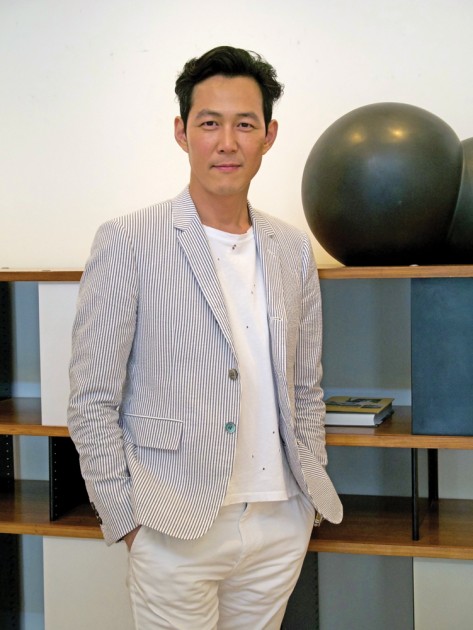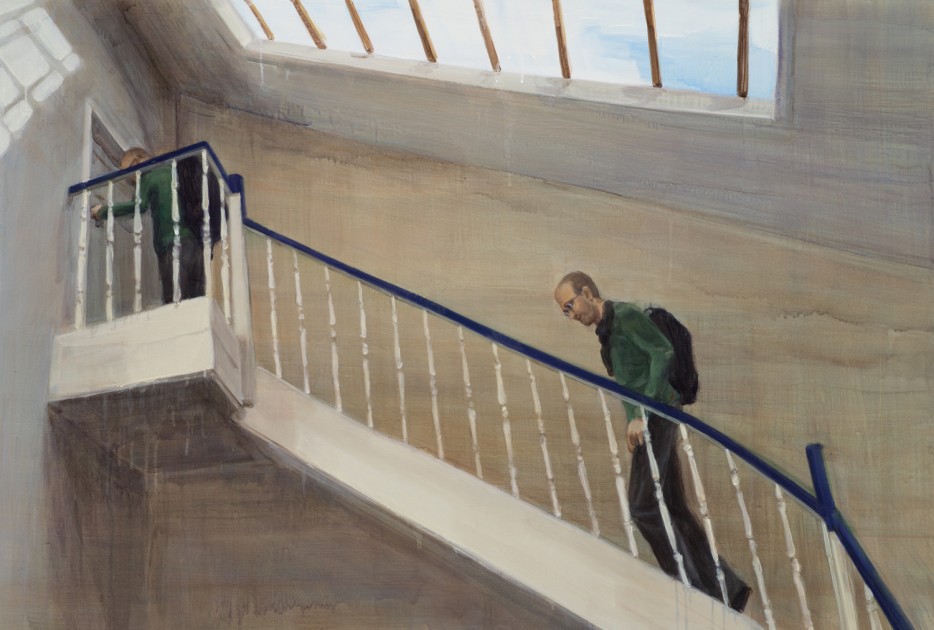In the 2012 crime film The Thieves Jung-Jae Lee plays Popie, the leader of a gang of professional crooks who operate in Korea, Hong Kong and Macau, targeting private collections of trophy art and priceless jewels. Little did fans of Korean films and television dramas know that the man playing this handsome mastermind of high-end heists had, in real life, embarked on his own adventure as an art collector more than a decade earlier.

Although Lee’s foray into collecting is still relatively recent, art has always been an interest. Over coffee in Seoul’s upscale Hannam neighborhood, the striking yet reserved performer, who adopts a subtly hip sartorial style, wistfully declared he would have liked to have been a painter or sculptor. As a boy, he had artistic aspirations. He applied to the industrial-design program at Hanyang University, but was not accepted. Instead he studied film at Dongguk University and made his debut in Korean television dramas in 1993. Five years later he achieved stardom in the award-winning film An Affair, and through his role in Sandglass, one of the most important Korean dramas of all time, documenting South Korea’s slow transition to democracy following the Korean War. He has since featured in nearly 40 films and TV series. But as he explained, his acting career keeps him close to other creative fields: “Though I didn’t have the art school experience, I feel fortunate to be able to work in the arts as an actor. In a way, we are all artists. People have this urge to create and express themselves.”
Lee’s affinity for the artistic process eventually led him to collaborate with two of Korea’s leading artists. Known among some visual artists for his love of art, Lee was invited in 2010 to play one of the two lead roles (the other star is Im Soo-Jung) in Kyungwon Moon and Joonho Jeon’s El Fin del Mundo, a 13-minute, split-screen video installation, shown at Documenta 13 in 2012.
For the piece, the artist-duo invited architects, designers and scientists to help create the props and costumes for this elaborate sci-fi endeavor. As the title suggests, the video is apocalyptic in tone. Lee plays the last artist on earth, rummaging through the remains of a collapsed society to create his work, while on the other screen, the female character, who has survived the catastrophe, archives artifacts—including Lee’s character’s last artworks—from the past. Reflecting on how the experience affected his views on art, Lee commented, “It was nice to see people so focused and trusting in themselves and the artists’ vision, for the work to come to fruition.”
Unlike his artistic collaborations, Lee began collecting more by happenstance than by design. In 2000, he first acquired a painting by a young Korean artist at a children’s charity auction. Lee candidly admitted, “At first, I didn’t have the urge to collect. I thought, if you can see and enjoy art in museums and galleries, why buy it? That was rather a naive view. Even then, I only thought about buying these works to support the cause.” It wasn’t long, however, before his fascination with art took over. Curious to see more artworks, visit more galleries and meet artists, Lee began to play a more active role, whether acquiring or taking part in the creative process.
Today he describes his collection as “a work in progress.” While the box-office idol, who often takes on quietly self-assured male personas on screen, claims to have no idea about the number of works in his collection, he is quick to share some of his favorite artists: the minimalist Fred Sandback, revered for his austere works made from a few pieces of string or wire; conceptualist On Kawara; and Jenny Holzer, who is widely known for her text-based works. Among Korean artists, he is a fan of Jina Park’s paintings of scenes from ordinary life as well as two up-and-coming conceptualists: Lee Wan, who will take part in the Korea Pavilion at the Venice Biennale next year, and Chosil Kil, whose work will be on display at the Anyang Public Art Project in October.

Lee avoids depending on art advisors, and instead relies on his own eye, which he develops by visiting Seoul galleries, such as Kukje Gallery, PKM, Gallery Hyundai and Arario. He is also particularly fond of One and J.—dedicated to young experimental artists—and regularly meets up with its co-owner, Won Jae Park, to discuss the latest trends. “I enjoy talking about art, but very few people seem to have a real passion for it, which is a shame,” he told me. For his part, Lee freely chats on topics ranging from government support for the arts to the global embrace of Korean pop culture, as well as the 1970s Dansaekhwa painting movement. “In industries such as film or K-Pop, the government has invested a lot of time and resources promoting them to the world. But at the end of the day, the art has to be compelling and unique. I think Korean art, be it film, design, fine art or music, is interesting across a very broad spectrum.”
His enthusiasm for art and culture has not gone unnoticed at home. In 2012, Lee was appointed the first honorary ambassador of the National Museum of Modern and Contemporary Art (MMCA). His role was to widen the Korean audience’s engagement in art through his star-power. “As someone in the public eye, I hoped that my own interest in art and MMCA’s exhibitions would help get more people through their doors.” Although not directly attributable to Lee, more than 160,000 people visited the MMCA Seoul branch in its first two months of operation in 2013. Lee offered to be the face of the museum by attending its openings, joining exhibition press conferences, and posing in local advertisements. Later this year, however, will see the end of Lee’s contractual duties for MMCA. He remarked that if they asked him again, he would gladly resume his role.
Although not effusive, Lee’s enthusiasm for creativity is felt. He is credited for drumming up interest in art collecting among other celebrities, including 28-year-old Korean rapper and actor TOP, who commented in a 2015 interview: “In spite of our age gap, [41-year-old] Lee Jung-Jae has become a good friend. He calls once or twice a day to talk about art or furniture. He once told me he also felt he could not tell people he likes art. He was worried people might think he was just boasting.” Lee is currently contemplating establishing some kind of art initiative on his own, but this reticent actor isn’t revealing any details just yet—at least not to anyone outside his small circle of confidants. But Korean art audiences might be seeing him in a different kind of role very soon.
By Elaine W. Ng
This article was originally published in ArtAsiaPacific 100 Sep/Oct 2016. This article cannot be edited nor shared to third parties without permission from ArtAsiaPacific.





